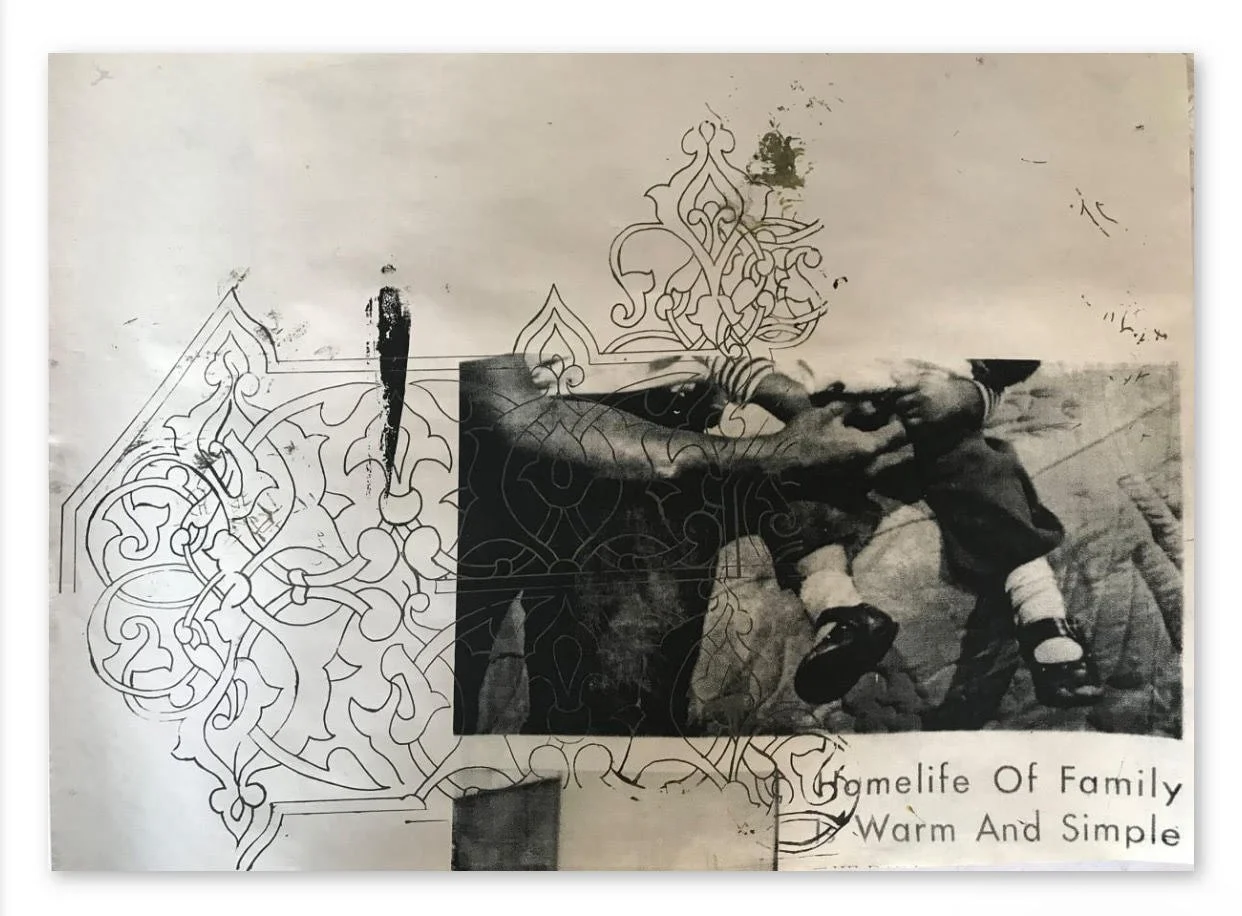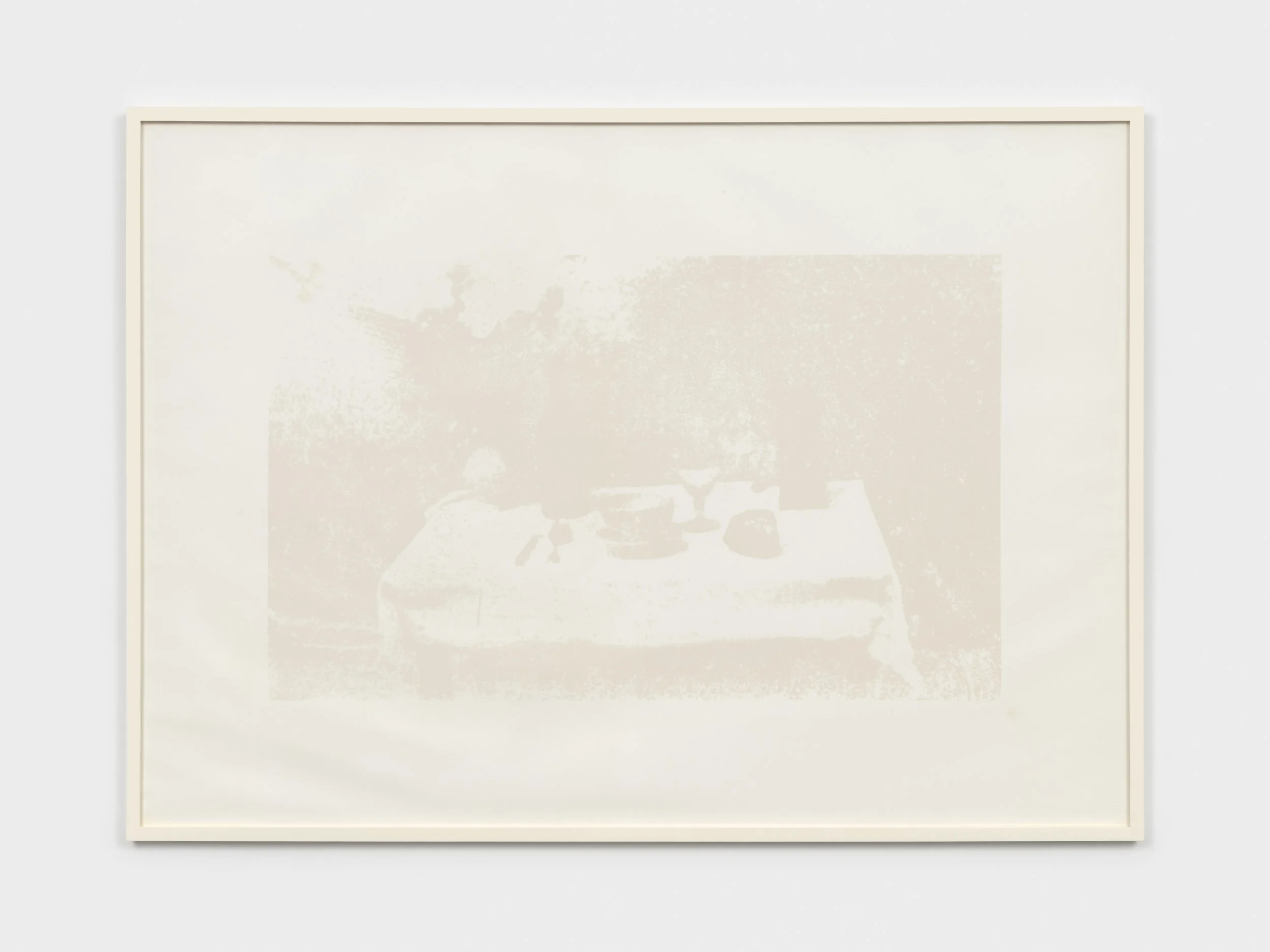Nsenga Knight: Close to Home | Queens Museum
Nsenga Knight
Warm and Simple, 2024
silkscreen on paper and acrylic paint on canvas board
Courtesy of the artist.
Written by Alexander Loukopoulos
Nsenga Knight documents the subtle power of the shared domestic space along with the cultural ramifications of artifacts from the 1964-1965 New York World’s Fair
Brooklyn-born and New York City-based artist Nsenga Knight has a strong sense of home. In a city like New York, where millions have flocked in attempts to re-establish themselves and their families, contextualizing one’s own relationship to their notions of home remains an essential prerogative. Knight’s debut solo exhibition, Close to Home, installed at the Queens Museum until January 19, is an interactive documentary of the home’s potential. Using examples from her own life, Knight communicates how the home can be more than just a place of shelter. Through the presentation of various furnishings and artifacts, as well as artworks by Knight, including paintings, collages, prints, videos, and wallpaper, the home is presented as a space that can function as both a cultural and spiritual anchor in a chaotic world.
Installation view, Nsenga Knight: Close to Home
(May 19, 2024 - January 19, 2025).
Photo courtesy Queens Museum
credit Hai Zhang.
(View Diagram List Below)
Knight’s work is built on the intersection between the domestic and the international. Close to Home is personal in its goal to reconstruct Knight’s family residences from their past six years living in Cairo, Egypt, which were already highly reflective of Knight’s Afro-Caribbean American Muslim background. The artifacts on display, which were pulled from the Queens Museum’s 1964-1965 World’s Fair archives, are also intensely personal in their representations of the then-newly postcolonial Islamic African and Caribbean nations.
Together, these private and shared cultural markers form a collective benchmark. Their presentation as expressions of identity echo among those with similar backgrounds, naturally fostering a sense of belonging and continuity within those communities. More importantly, their relationship to the domestic space prompts these cultural markers to act also as expressions of comfort and familiarity, which, in terms of Close to Home, may be their most artistically significant aspect. After all, who would not want to be comfortable in their own home?
Nsenga Knight,
Fitra Painting, 2024
oil on canvas
Courtesy of the artist.
The exhibition acts as but a chapter in the chronicle of place-making that has historically occurred throughout New York City. Its installation at the Queens Museum specifically is no coincidence. Along with its hosting of the 1964-1965 World’s Fair, Queens, also known as the world’s borough, is the most diverse borough in the city. Place-making is therefore an inescapable part of its history, as people from all over the world have made their mark on the borough in some form or fashion.
Detail view, Irregular Black People: Regardless of where, Muslims pray at right time, 2024
collage (screen print on paper and papyrus paper mounted on
canvas board)
Courtesy of the artist.
With Close to Home, Knight is taking a personal snapshot of a larger movement. She utilizes historical elements of a highly cultured community to construct that community’s idea of home. Presenting that construct to a larger audience in a space known for its diversity ensures that people from all backgrounds can resonate with Knight’s larger mission of expanding appreciation for one’s own culture and traditions, an appreciation which is paramount in building a home as a place of not just shelter, but of personality, self-expression, and promise for a better future.
Installation View Credits












